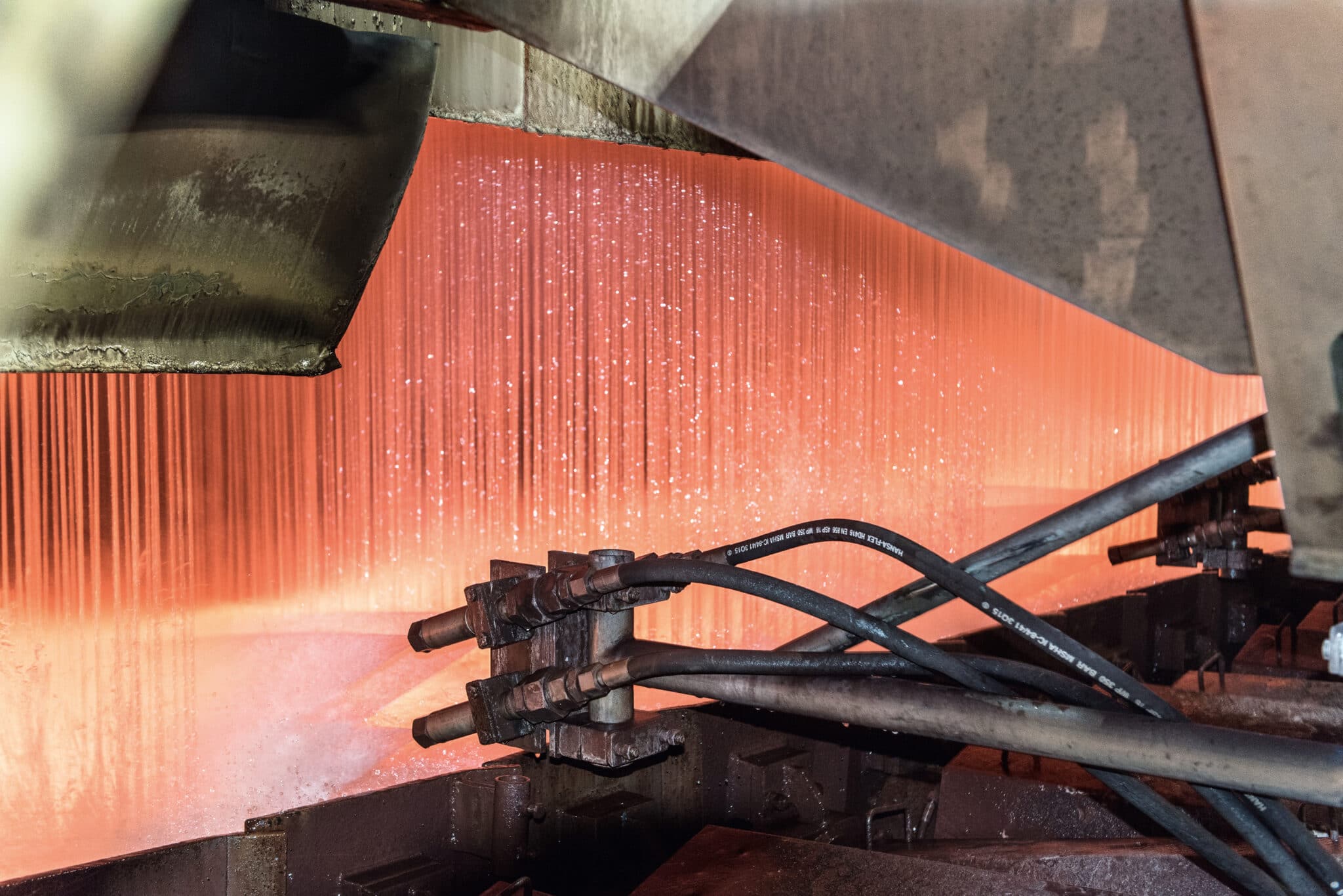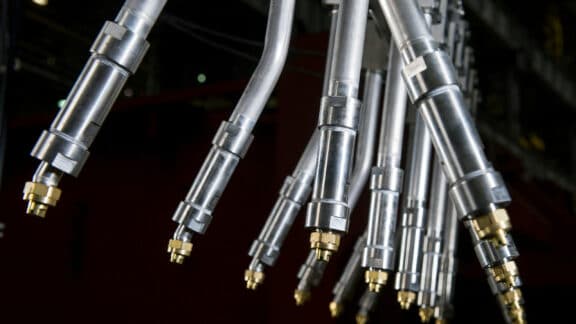In 2010, a brand new idea for a novel type of cooling model triggered a wealth of activities geared toward an implementation in the years to follow. In its current form, the model is designed to use a comprehensive thermodynamic approach, starting at the roughing mill and calculating strip temperature, phase content, and microstructure in real time from the roughing stand to the coiler.
The process model not only controls cooling units but also allows for the control of the booster pumps for Power Cooling and the water-management pumps. The fact that the cooling model always knows in advance how much water is going to be needed has two major benefits: Large amounts of water can be controlled with unequalled dynamics, and efficient control of pumps and water can lower production costs.
Another highlight is the comprehensive temperature control for the transfer bar, final strip, and coiler. Based on measurements of pre-strip temperature after the roughing mill, the cooling model predicts subsequent rolling temperatures and controls the speed of the finishing mill with an optimized speed diagram. Since the future rolling speed is thus a known factor, it can improve the accuracy of the values for the final rolling and coiler temperatures—above all for thick strip, where dead times are especially long.
Together with the mechanical equipment from Primetals Technologies—cooling aggregates are fitted with continuous-control valves and pumps with vector control—the new cooling model forms a cyber-physical system. It lowers production costs by reducing the need for alloying elements and energy, increases throughput as well as quality, and opens up new possibilities for the production of advanced steel grades.


